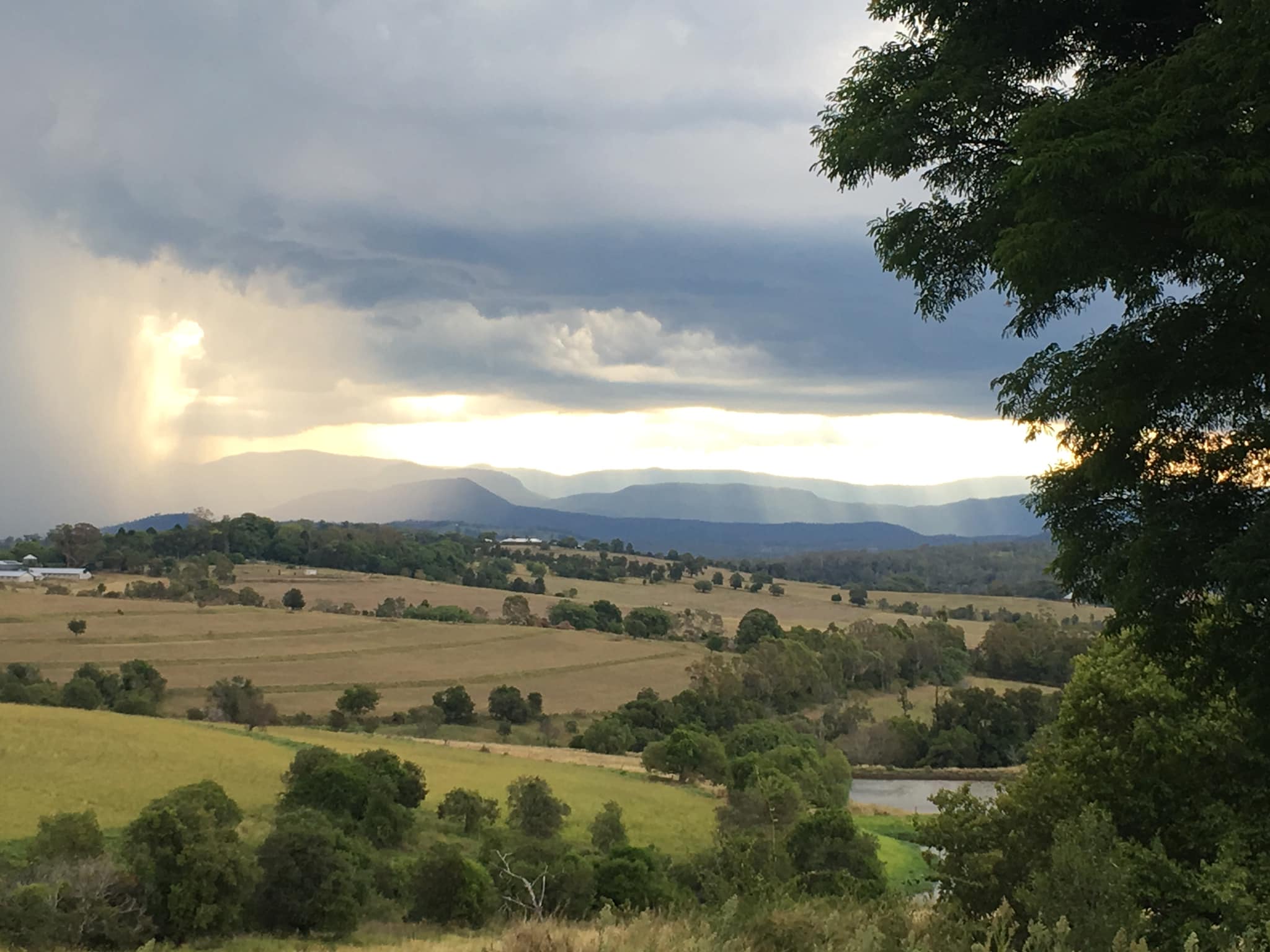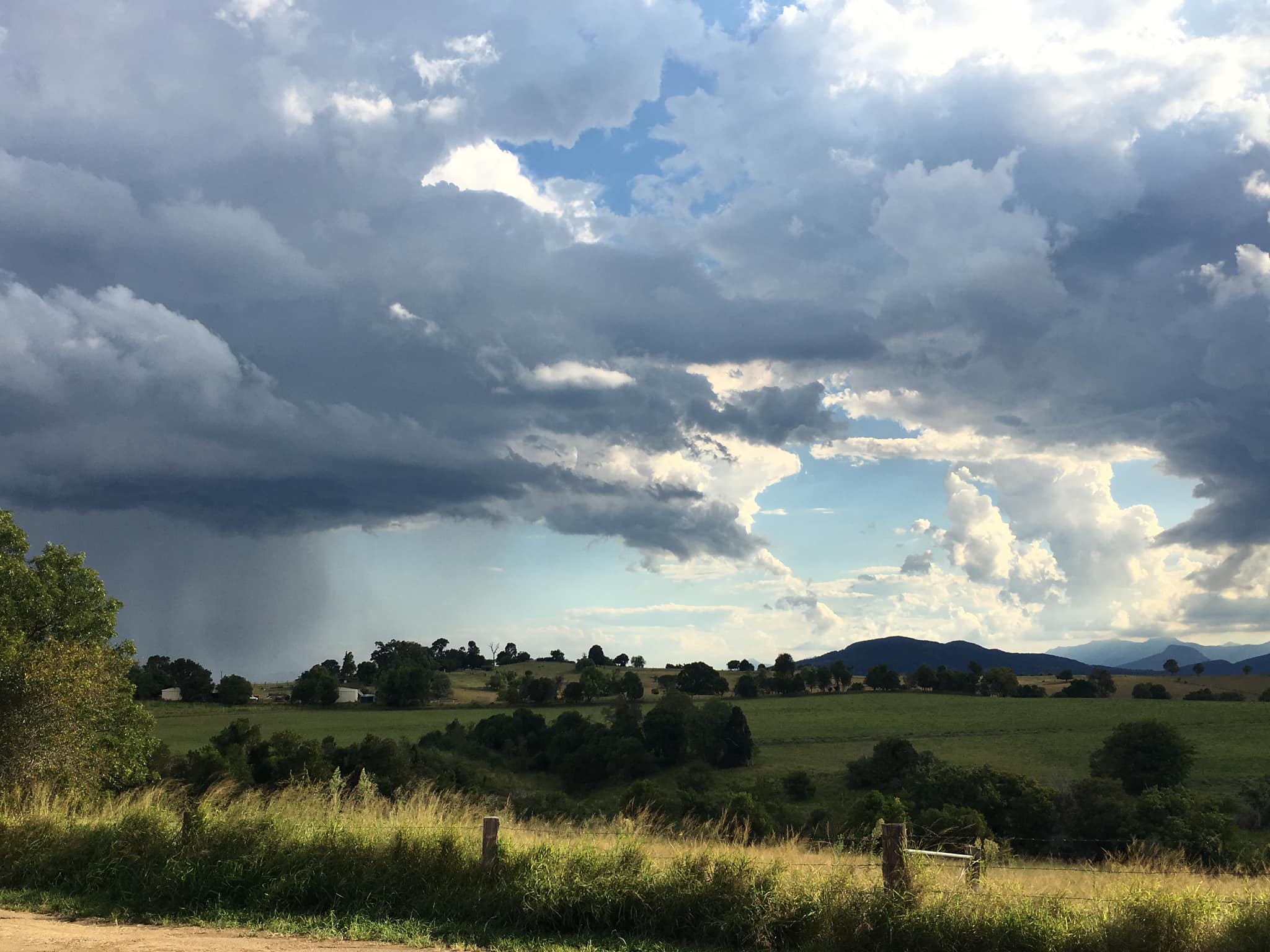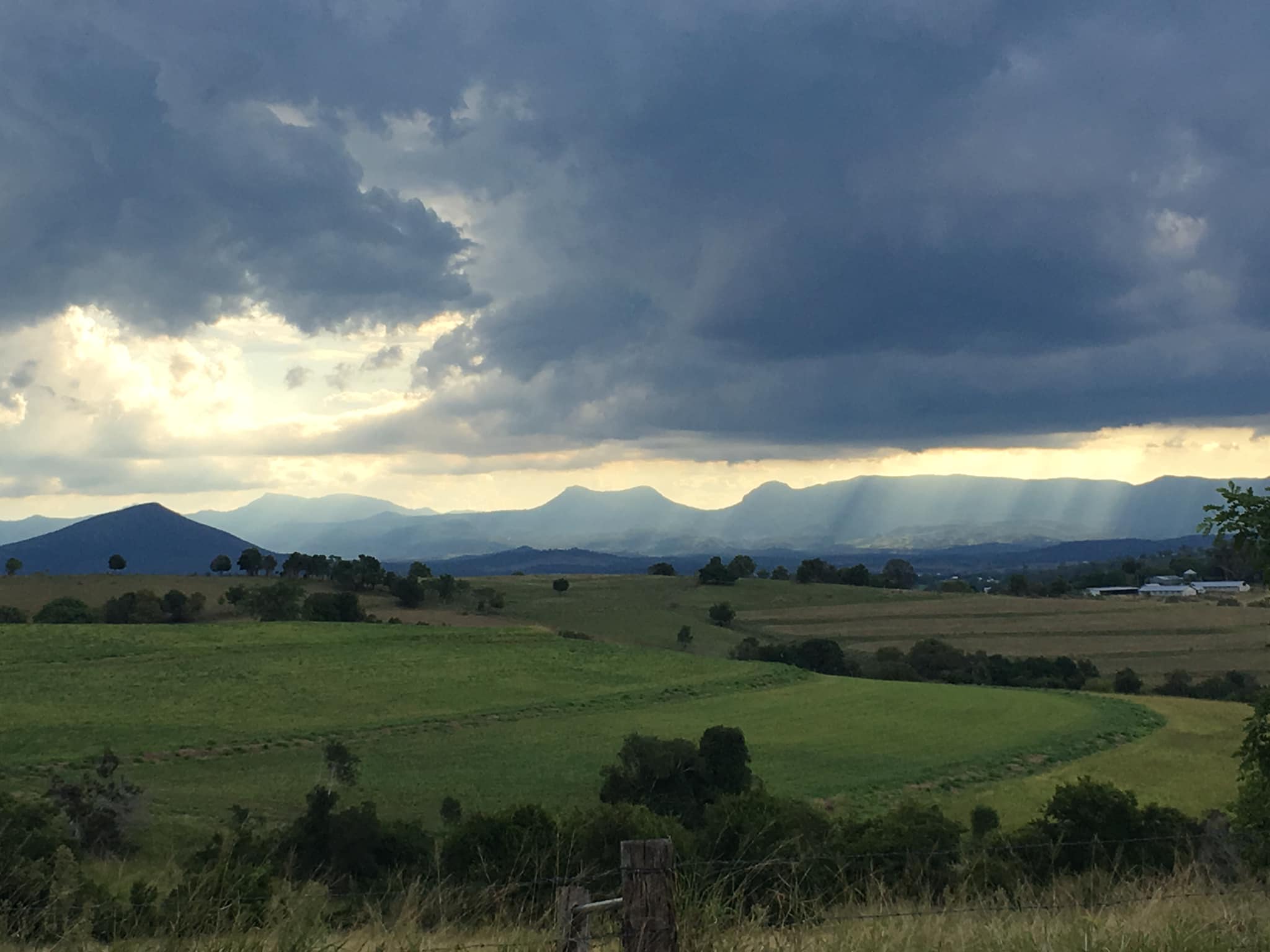About half of the farm has heavy clay soils which naturally support a vegetation of thick scrub. The remainder of the property has lighter soils with open forest.
Petrified stumps ’grew’ among the ‘Narrow-leaf Ironbark trees’ on the farm. Petrified logs lay on the ground adjacent to other logs. Mud stones -- when we cracked them open -- revealed multiple layers of fern leaves. Thousands of fragments of petrified wood containing veins of quartz littered the countryside. As a teenager, I took every opportunity to collect samples. Cultivating the fields (especially after a rainstorm had washed the rocks clean and made them sparkle) gave me many opportunities to view the mass of glistening petrified (silicified) wood scattered all over the ground.
On one occasion, I was driving a tractor pulling a disc-offset cultivator. I was cultivating virgin country for the purpose of planting improved tropical pastures (a mix of both grasses and legumes). I was cultivating around and between the many Ironbark trees which we intend to leave standing. We were leaving them grow in this pastured area. The implement ran over a stump in the native grasses, and I stopped so I could mark its position with a stake with the intention to come back later and burn it. To my utter surprise, the stump was made of stone and not of wood as I had expected. I did come back later – but not to burn it. I came back to dig it up and take it home. I replanted it by the tank-stand on the western side of the house. The stump had a knot which formed a hole in its side, and into this cavity I planted a native orchid. Very soon, the orchid was as dead as the stump – (I do not have a ‘green-thumb’). The stump, in the position where I found it, had no roots and stood to the height of around 300mm above the ground. The butt of the stump had only the above-ground portion of the roots as they reached to the soil – and it stood there – appearing as if it had naturally grown there – as if it were one with the trees growing beside it. On another occasion, not very far distant, I found a much smaller petrified stump in the same condition – it was standing upright and like the previous stump also looked like it was petrified in precisely the same position in which it grew. It was only about 150mm high and the trunk only 60mm in diameter. It too, I dug up (quite easily this time because of its small size) and took it home and ‘replanted’ it.
The first two decades of my life were spent on the farm – and I grew very fond of collecting and studying the rocks. I was a teenager during the 1960’s. It is just too bad that there were no mobile phones back then. If there were, I would have taken loads of photos. (Compared to the technology we have today, looking back at the 1960’s -- they now look like the dark ages.)
Now I am retired and live in Dubbo, in the Central-west of New South Wales. I now have time available to pursue my interests -- and one of my life-long interests is geology.
Geologically, Dubbo is situated at the Northern end of the Lauchlan Fold-belt; and it is South of the extinct shield volcanos of the Warrumbungles and surrounding volcanic areas. (There are now no active volcanoes in Australia.) Without traveling more than 100km in any direction, I can explore many different geological formations. This I plan to do, and share my more interesting finds on this website – geotalk.au


